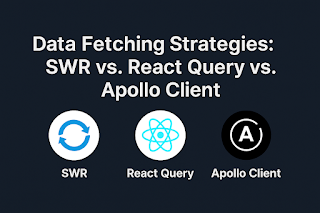Understanding API Rate Limiting & Throttling for Scalable Apps
In today’s connected world, APIs are the backbone of modern applications. But with growing user bases and interconnected services, the risk of server overload, abuse, or system crashes becomes real. That’s where rate limiting and throttling step in — to ensure performance, security, and fair usage.
What Is API Rate Limiting?
API rate limiting controls how many requests a client can make to an API within a specific time frame. It helps prevent abuse (like DDoS attacks), ensures fair access among users, and safeguards infrastructure from being overwhelmed.
Example:
A public API may allow 1000 requests per hour per user. After that, users receive a 429 Too Many Requests error until the limit resets.
What Is API Throttling?
Throttling is a dynamic form of rate limiting. Instead of outright rejecting requests, it slows down or queues them when usage exceeds safe thresholds. It ensures graceful degradation rather than abrupt denial.
Key Differences
Common Rate Limiting Strategies
Fixed Window: Fixed intervals (e.g., 100 req/min)
Sliding Window Log: Tracks timestamps for accurate limits
Token Bucket: Requests use tokens; tokens replenish over time
Leaky Bucket: Processes requests at a fixed rate regardless of bursts
Benefits of Rate Limiting & Throttling
Security: Prevents brute-force or abuse attacks
Performance: Maintains consistent response times
Fair Usage: Ensures equitable access among users
Cost Control: Avoids excessive infrastructure bills
Real-World Use Cases
Stripe: Rate limits to protect payment APIs
GitHub: Enforces usage caps on API tokens
AWS API Gateway: Built-in throttling with usage plans
Code Sample (FastAPI + Rate Limit Middleware)
from fastapi import FastAPI, Request, HTTPException
from slowapi import Limiter
from slowapi.util import get_remote_address
app = FastAPI()
limiter = Limiter(key_func=get_remote_address)
app.state.limiter = limiter
@app.get("/data")
@limiter.limit("5/minute")
async def get_data(request: Request):
return {"message": "Success"}Best Practices
Set clear documentation for your API limits
Use adaptive limits based on user roles or API keys
Provide retry-after headers for smooth client UX
Log and monitor limit violations to spot abuse trends
Final Thoughts
Rate limiting and throttling are critical for scalability, stability, and security in modern API-driven apps. Whether you’re building public APIs, internal microservices, or real-time systems - implement them smartly for a better user and dev experience.
#API #RateLimiting #Throttling #Scalability #WebDevelopment #Backend #FastAPI #NodeJS #APISecurity #DevOps #SystemDesign #SoftwareEngineering #CloudArchitecture #APIGateway




Comments
Post a Comment